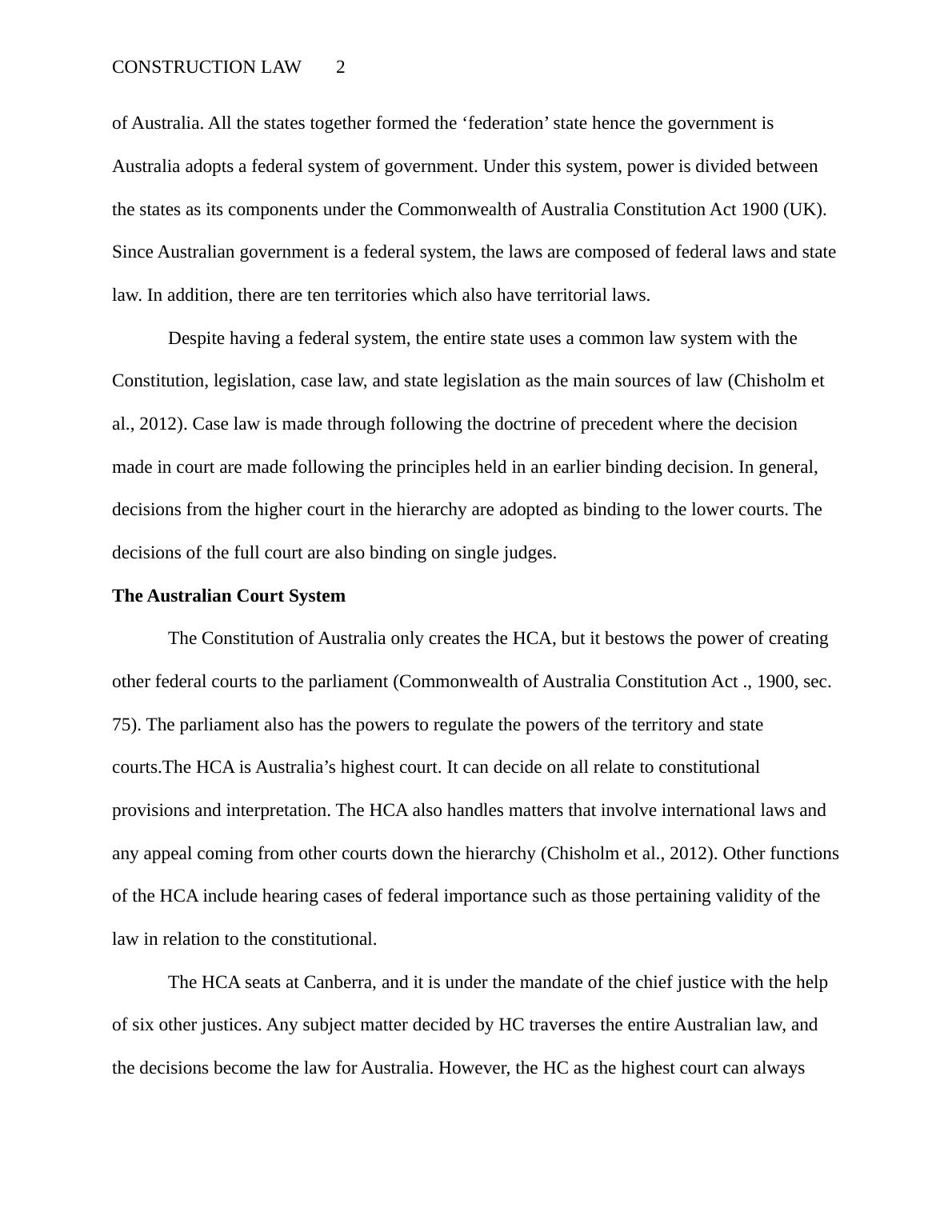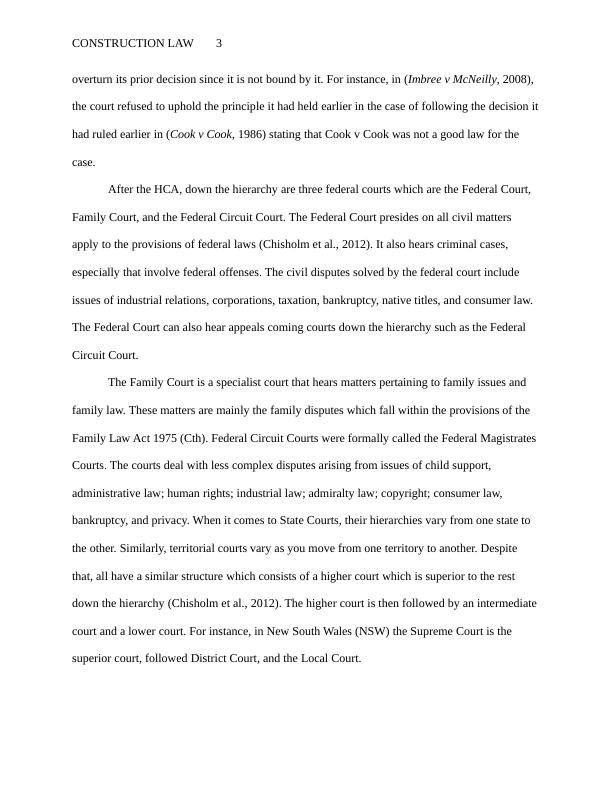Construction Law: Legal System and Contract
Discuss and explain the role of 'common law' in the Australian legal system and its relationship with enacted law - legislation.
13 Pages3867 Words338 Views
Added on 2022-11-25
About This Document
This document provides an overview of the Australian legal system and its key principles. It explains the hierarchy of courts in Australia and the role of case law in the legal system. Additionally, it discusses the essentials of a valid contract, including agreement, consideration, and contractual intentions. The document also applies these principles to a case between Mary and Pat, analyzing the validity of their contract and the liability for design defects and late completion.
Construction Law: Legal System and Contract
Discuss and explain the role of 'common law' in the Australian legal system and its relationship with enacted law - legislation.
Added on 2022-11-25
ShareRelated Documents
End of preview
Want to access all the pages? Upload your documents or become a member.
Doctrine of Separation of Powers in Australia and Validity of Contracts
|11
|2629
|346
Analysis of Constitution Law Cases: Separation of Powers and Public Interest
|9
|2351
|455
Australian Commercial Law PDF
|12
|3087
|42
Report On Political System Of Australia
|17
|3444
|230
The Doctrine of Separation of Powers and Legal Analysis of an Acquisition Case in Australia
|7
|2550
|164
Australian Constitutional Law Assignment
|10
|2733
|442




